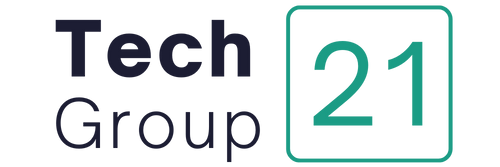Effective demand planning is a crucial component of any successful business strategy. It involves forecasting future customer demand to ensure that products are available when needed without overstocking or understocking. This process requires analytical skills, market knowledge, and technological tools. Understanding the essential tools and software is a foundational step for beginners. Utilizing the appropriate demand planning software can significantly enhance the accuracy and efficiency of your demand planning efforts.
Understanding Demand Planning
Demand planning is not just the forecast of future sales but rather a procedure that uses previous sales data, market trends, and statistical analysis to create it. It assists firms in controlling their stocks, enhancing supply chain efficiency, and increasing client satisfaction.
Demand planning is useful because it not only eradicates the unnecessary expenses of holding inventory beyond what is necessary but also eliminates the possibility of stockouts, ensuring that the products are available when customers want them.
The demand planning process typically involves three main stages: data collection, demand forecasting, and demand management. These are some of the sophistical areas of SCM. Each stage, as mentioned, must involve specific tools and software for high competency and work speed.
Essential Tools for Data Collection
The first and foremost essential activity in demand planning is data collection. This data can be historical, market research, or customer feedback on earlier sales. The tools that should be used in data collection should be one that can accommodate a large amount of data and other tools that can merge data from different sources.
- ERP Systems (Enterprise Resource Planning): ERP systems are complicated software applications that cater to a firm’s essential operational needs, such as financial, human resources, and supply chains. Some of these systems can even compile data from different departments, which can help better understand the business. Some popular ERP systems include SAP, Oracle, and Microsoft Dynamics, which have effective data-gathering and consolidation features.
- CRM Systems (Customer Relationship Management): CRM systems are centered on administering interactions with current and prospective consumers. They gather information about customers’ behavior, preferences, and purchases, which can significantly help forecast demands. Popular CRM systems like Salesforce and HubSpot offer customers’ data and information.

- POS Systems (Point of Sale): POS systems capture every sale made in the business and are, therefore, a great source of real-time information regarding products. They are vital in monitoring sales volume and creating short-term demand forecasts. Innovative POS systems like Square and Shopify help them gain valuable insights and reports.
Tools for Demand Forecasting
After that, the data is collected and analyzed to establish the demand forecast. This stage needs tools to handle large datasets and apply statistical models to produce the correct predictions.
- Statistical Software: Some standard statistical analysis software packages include SPSS, SAS, and R. These reliable platforms can handle large datasets and incorporate diverse forecasting techniques. Given past data and the trends likely to be displayed by the market, these tools are critical in producing accurate forecasts of demand over a given period.
- Spreadsheet Software: Microsoft Excel and Google Sheets, which are spreadsheet tools, do not possess the functionality of sophisticated statistical software, but they can be used for simple demand forecasting. These tools contain different functions and equations that may be used to predict future sales based on historical data. It can also be especially beneficial for those who own small businesses or are just starting their journey, as it can be easier to master than the programs with more advanced functionality.
- AI and Machine Learning Platforms: Higher-level demand planning is now leveraging artificial intelligence and machine learning to improve the accuracy of demand forecasts. Various tools, such as IBM Watson, Google AI, and Azure Machine Learning, can gather complex information, find patterns, and provide more precise insights than normal tools.
Demand Planning Software
However, several other tools can be of great help in demand planning. As mentioned before, there are different types of software tools for demand planning that can make this task much easier for the manager. Here are some of the leading demand planning software solutions available today:
- Demand planning software: Demand planning software is not just your regular software; it is specially developed to handle demand forecasting and inventory management. It links with other business applications to give a complete picture of needs, supply, and stock. It employs algorithms and machine learning to predict and control inventory demand and supply.
- Kinaxis RapidResponse: As a cloud-based demand planning solution, Kinaxis RapidResponse provides real-time analytics of supply chain activities. It boasts rich data analysis and forecasting tools, which enable organizations to adapt effectively to fluctuating demand and supply. Kinaxis also has collaboration tools that allow cross-functional teams to work on demand planning-related projects.

- Logility Voyager: Another widely used demand planning software is Logility Voyager. It is also effective software that integrates analytical capabilities and collaboration options. It includes demand forecasting capabilities, inventory optimization, and supply chain planning. Through the options mentioned above, Logility Voyager is easy to use and coupled with a powerful analytic tool, which makes it suitable for organizations that require enhanced demand planning.
- SAP Integrated Business Planning (IBP): SAP IBP is a solution that comprises a demand planning application, a supply planning application, and a sales and operations planning application. It employs complex algorithms and machine learning to forecast demand and determine the right stock quantities. In addition, SAP IBP provides options for working collaboratively on real-time demand planning activities.
- Oracle Demantra: Oracle Demantra is a demand planning suite designed to provide users with highly sophisticated forecasting and inventory planning solutions. It links with Oracle’s ERP systems to offer supply chain transparency in operations as they occur. Oracle Demantra also has collaboration functionality that allows for the creation of demand plans and planning collaboration among teams.
Conclusion
Demand planning is critically important, and if a business is to survive in the current unpredictable market environment, it must master it. With a basic understanding of how demand planning works, the use of fundamental tools, and demand planning software, even those new to the concept can efficiently perform accurate demand forecasting. The choice of the right tools and software enables more accurate forecasts and optimizes the general functioning of the business, which is beneficial to customers and results in lower expenses. In conclusion, demand planning is an ongoing process; thus, learning is a valuable component of demand planning when entering the market.



